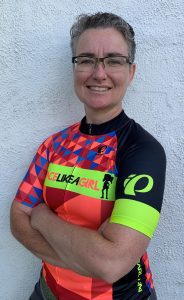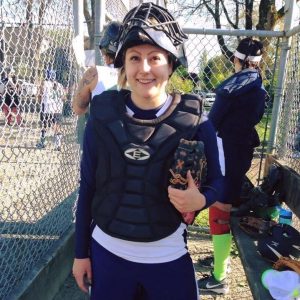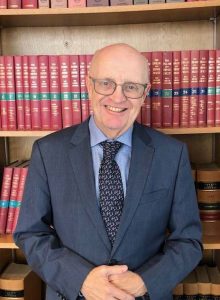Resources to help you through the second wave of COVID-19

As people have been heading back to work and school this fall, the second wave of COVID-19 has reared its ugly head. Cases are up across the country with hot spots, mainly in urban centres, threatening the capacity of our health care system.
We want to remind you that you can find some excellent resources in the COVID-19 section of our website to help you through this latest challenge. You’ll find webinars on the virus and protecting yourself; three videos to help you cope mentally, keep your body well nourished and an at-home exercise routine.
Most importantly, you’ll find a list of public health unit contacts and websites from across the country. We suggest you visit these for the most up-to-date restrictions in your community.
You may also consider joining a CPFF support group that is meeting virtually. Check in with the contact person for the group closest to you and see if they are meeting this way. It’s a great way to share coping strategies, as well as practical suggestions to stay safe during this challenging time. After all, they are walking in your shoes.
Stay safe and strong. Remember that living with PF, you know more than most about protecting yourself and your family from all viruses.
Find your own motivation to get moving, says exercise therapist

Maybe you want to be able to play with your grandchildren, or do your own groceries, or shower and dress yourself – or keep doing those things. Exercise can help you maintain your independence longer or help you do more now. Participation in an exercise program is also a requirement for lung transplant candidates.
“I tell my clients that you need to do the things you have to do, to do the things you want to do,” says Melanie Stevenson, an exercise therapist in the LiveWell Chronic Disease Management program at Royal University Hospital in Saskatoon.
And she has the personal experience to empathize with her clients and understand the effort involved. She’s lived with asthma since the age of 4 and knows how much exercise helps in reducing flare ups and maintaining lung health. An accident later in life also meant she had to re-build her body to once again enjoy competitive sports and coaching. Currently a competitive cyclist, Stevenson is the mother of an autistic son who participates in the Special Olympics.
During Pulmonary Fibrosis Awareness Month in September, Melanie was one of the presenters from Saskatchewan. (If you missed it, you’ll be able to see her webinar when it is posted on our website later this month.) Her down-to-earth advice hit home for many listeners. “Exercise doesn’t mean you are training for a marathon. I try to relate it to everyday activities. Getting out of your chair requires leg muscles, which you can build doing squats. Bicep curls can help you carry your laundry basket.”
Stevenson began her education session highlighting the short-term and long-term benefits of exercise, including:
Short-term benefits
- Lowers your blood glucose.
- Gives you more energy during the day.
- Decreases stress, anxiety and fatigue.
- Improves relaxation and sleep.
- Improves confidence and well-being.
Longer-term benefits
- Improved breathing muscle function.
- Increased endurance.
- Better mental focus – reduced fear.
- Easier to do every day functions.
- Lower risk of complications such as eye, heart/circulation and kidney disease.
- Helps to maintain or lose weight.
- Lowered blood pressure.
- Stronger bones and muscles.
- Improved quality of life.
Even if you have never exercised before, you can reap the benefits by starting to exercise today. “Start slowly with what you handle right now, and then gradually add to your exercise routine over time,” says Melanie.
There are three different types of activities, which together can help to improve your overall fitness:
- Aerobic activities, which help your heart and lungs by increasing your heart rate and breathing, such as walking, swimming, skating or dancing.
- Resistance (or strengthening) activities, which help your muscles and bones stay strong and improve your posture (important for breathing), such as resistance training routines (or classes) weight lifting, body weight exercises, and resistance band workouts.
- Flexibility activities, which help you move easily, keeping your muscles relaxed and your joints mobile, such as yoga, pilates, tai chi and daily stretching routines.
While Stevenson stressed the importance of conditioning your whole body in her presentation, there are also exercises you can do to improve your breathing. “We breathe using our core muscles, our diaphragm, and the muscles around the ribs, the thoracic cage, and upper chest,” she says, “but we can also use our back muscles to help expand our rib cage and breathe more deeply, expanding into the bottom of our lungs.” She suggests laying down on your back, taking a deep breath and then releasing it slowly in a controlled manner, by singing a single note, while exhaling. “Try holding the note for just one to three seconds to start, gradually working your way to four or five seconds.”
What is also unique about exercising with pulmonary fibrosis, is that many people, early on, will not need supplemental oxygen at rest, but may need it on exertion – when exercising. Stevenson suggests wearing a pulse oximeter when exercising to monitor your oxygen level. If your oxygen level drops below 88 to 90 per cent, take a break, slow down or lower your exercise intensity. You may want to talk to your doctor about getting enough supplemental oxygen to enable you to exercise. In most provinces, you will need your doctor’s or respirologist’s recommendation to get the oxygen you need covered.
Ideally, people with pulmonary fibrosis will be referred to a specialized exercise/rehab program for people with chronic disease and/or pulmonary fibrosis by their respirologist, or family physician. Unfortunately, many such facilities are now closed due to the pandemic. Until they re-open, there are online resources to help you get started. At www.cpff.ca there are a couple of videos you can follow. One is in the COVID-19 section, the other is in the Living with Pulmonary Fibrosis section and both are designed to be done at home. Melanie also recommends an online cardiac program from the University Health Network in Toronto. Click on the Get Active section to find a variety of exercises. “We also encourage our clients to read through the rest of the information on the site because it has some interesting things related to heart health and diet as well,” says Melanie.
What’s her most important message? “Just move,” says Stevenson. “Start where you feel comfortable and build slowly.”
CPFF advocating for access to Ofev beyond IPF patients

In May 2020, Health Canada approved the use of nintedanib (Ofev) in patients with a broad range of progressive fibrosing interstitial lung diseases (ILDs) other than idiopathic pulmonary fibrosis (IPF). The drug has been used to treat IPF patients in Canada since 2015 and after determined advocacy efforts by CPFF is now covered under all provincial health plans across the country for IPF patients.
In August 2020, CPFF made its patient group submission to the Canadian Agency for Drugs and Technologies in Health, (CADTH), the primary body of Health Technologies Assessment (HTA.) You can read our submission, along with those of other patient groups to advocate for access to this medication for patients with other progressive fibrosing ILD conditions. Other patient groups making patient group submissions include: the British Columbia Lung Association & Lung Groups, Scleroderma Canada and The Ontario Lung Association / Lung Health Foundation. You can also read the review status and schedule on the CADTH website. The CADTH draft recommendation is expected in early February 2021.
“We regard advocating for treatment access, for any approved drug, across the country, as a critical part of our mission on behalf of people living with pulmonary fibrosis,” says Sharon Lee, Executive Director, Canadian Pulmonary Fibrosis Foundation (CPFF.) “It can be a long and involved process, but we are hopeful that this treatment will be covered by provincial health plans relatively quickly, since it is already available for people with IPF.”
The process to gain access for a new medication can be arduous and take several years. After Health Canada approves a drug as safe and effective, it moves to the Patented Medicine Prices Review Board (PMPRB), which is an independent, quasi-judicial, federal body with a dual mandate. First, a regulatory mandate to ensure that prices charged for patented medicines sold in Canada are not excessive, and second, a mandate to report on pharmaceutical trends of all medicines and on research. The PMPRB compares the price to the median price set in the ‘basket’ of seven comparator countries: France, Germany, Italy, Sweden, Switzerland, the U.K., and the U.S. Prices set by PMPRB are the “retail” price, which might then be subject to negotiations between manufacturers and public and private drug plans. People who are not covered by public or private drug plans pay this PMPRB price directly.
After Health Canada approval and the price review by PMPRB, CADTH assesses the “value” of a medication in a common drug review (another review stream, the Pan-Canadian Oncology Drug Review reviews cancer drugs.) An independent, not-for-profit organization, CADTH is responsible for providing health care decision-makers with objective evidence to help make informed decisions about the optimal use of health technologies, including drugs, diagnostic tests, and medical, dental, and surgical devices and procedures. In addition to evidence, it also provides advice, recommendations, and tools. Under a Common Drug Review (CDR) CADTH decides the ‘value’ of the drug relative to others available and relative to opportunity costs of funding this drug versus other drugs, then recommends a yes, a yes with conditions – usually a pricing reduction – or no to provincial funding bodies in health ministries. Quebec has L’Institut national d’excellence en santé et en service sociaux (INESSS) for this process.
In making a patient group submission to CADTH and INESSS, CPFF is mindful of what the assessment will be considering, including the following:
- is the drug/technology safe
- for whom does it work and when
- is it better than what we already have or do
- how will it be used
- does it provide value for money
- can we afford it
- what are the trade-offs
- what else needs to be considered?
Following the review by CADTH, the pan-Canadian Pharmaceutical Alliance (pCPA), a joint provincial/territorial/federal body, manages the process of private negotiations with manufacturers to find acceptable, undisclosed, drug prices, eligibility criteria, and risk sharing arrangements (rebates, expenditure caps, etc.) Once negotiated, the provinces or territories still need to determine whether they will add it to their list of covered medications (formulary.)
The final stage in determining access to medications, involves provincial, territorial, and federal public drug plans. Once a pCPA negotiation is complete, each provincial, territorial, or federal public drug plan makes a decision on whether to include the drug in its formulary. Each jurisdiction is responsible to its own government for fiscal restraints and so drug formularies across the country vary drastically, meaning that coverage for Canadians is not consistent. The various jurisdictions have a myriad of cost-reduction strategies that range from generic products to substituting one type of medication for another, and refining eligibility criteria.
“CPFF will do all it can, to ensure equitable access to this medication, as it does for all new safe and effective treatments, throughout this process,” says Sharon Lee. “We’ll keep you posted in this newsletter and on our website on the progress of Ofev access for people with progressing fibrotic ILDs.”
Dr. Winstone credits CPFF for helping her to ease wait times in B.C.

It’s been a long journey from the small town of Gladstone, Manitoba to a thriving respirology practice in Burnaby B.C. for Dr. Tiffany Winstone. And one in which CPFF played an important part.
After graduating as a respirologist in 2015 from the University of British Columbia (UBC), she spent an additional two years of specialized training in interstitial lung disease (ILD) under the supervision of Dr. Chris Ryerson, director of the St. Paul’s Hospital ILD clinical and research program in Vancouver. She also completed a program in clinical effectiveness at Harvard University in Boston.
CPFF funding made it possible for her to pursue these additional years of specialization. “I am so grateful to CPFF and its donors, for supporting my additional training. Not only did I have the opportunity to care for these amazing patients, but I had the time to dedicate to research,” says Dr. Winstone. “And the Harvard program was very practical in teaching its students, mainly doctors, to effectively conduct and analyze clinical trials and to help us critically review data and research for its relevance to our patients.”
When she finished her fellowship in 2016, she was hired as an ILD specialist by the Fraser Health Authority in Burnaby B.C. – the third ILD specialist serving the province. She now has a busy, community-based practice in the area, which serves patients from across province. She gets two or three new pulmonary fibrosis patients each week.

The addition of Dr. Winstone’s practice has meant reduced wait times for patients to see an ILD specialist in the province. “My patients come from all parts of the province,” she says. “And the one good thing I can say about this pandemic is that we’ve all gotten better, both doctors and patients, at using technology to meet and that is improving access, especially to more remote areas.”
Along with Dr. Ryerson and Dr. Khalil of Vancouver, Dr. Winstone reviews (virtually these days) new cases with a chest radiologist and a chest pathologist to diagnose ILD patients. “This type of multi-disciplinary discussion, or MDD, is the gold standard for diagnosing our patients,” says Dr. Winstone.
In addition to caring for patients, Dr. Winstone also delivers training sessions every few months to respirologists in other parts of BC. This used to mean travelling, but since the pandemic is being done virtually.
A new mother to four-month old Ellie, Dr. Winstone was fortunate enough to drive back to Gladstone, Manitoba, recently to introduce her daughter to her family and have an extended visit. She laughs when she tells me that a few years ago, her attendance at Harvard made the local newspaper. Growing up in this small rural town, she played competitive sports, helped out on her father’s bee farm and lived with asthma. All of these factors influenced her future career path.
She chose to attend Simon Fraser University on an academic scholarship because they had a softball program. She played in 12 National Fastball Championships across Canada representing Softball Manitoba and was a Western Canadian Championship Gold Medalist in 2007 and a National Women’s Silver Medalist in 2008. She still plays softball and ringette today.
Her farming background has been useful when taking patient histories and noticing possible environmental exposures. And living as an athlete with asthma, made her very sympathetic to those with breathing problems. “Going through my own journey to get the right treatment, while playing sports, made me want to help others. It just feels right to me.”
During Pulmonary Fibrosis Awareness Month in September, Dr. Winstone posted a video message of hope and inspiration on CPFF’s www.hopebreatheshere.com website. You can find it under the Stories section.
She has endless admiration for her patients living with pulmonary fibrosis. “I am always so impressed with the questions I get from them. They do a lot of their own research and come to appointments very prepared. I am so impressed by their perseverance and how they advocate for themselves.”
And she is hopeful about the future. “I’m seeing a great deal of progress in research into ILD. The recent approval of an anti-fibrotic treatment for types of progressive fibrosing disease other than IPF, is a big step forward. I’m optimistic that we will eventually find a cure.”
Dr. Winstone applauds the CPFF and its donors for investing in specialist training and research. You can see videos from other CPFF fellows in the Stories section of www.hopebreatheshere.com or read about our most recently funded fellows on our website. You can help CPFF continue these critical investments in the future, by making a donation today.

No matter what your current health status, having a Will in place is a gift you give to your loved ones left behind in the event of your death. It also ensures your wishes will be carried out. We asked lawyer Robert Welch of Lancaster, Brooks and Welch in St. Catharines, Ontario, to answer some basic questions about creating a Will. Welch has given presentations about estate planning to a local CPFF support group. You’ll want to consult your own lawyer to help you with yours, but we hope this helps you get started.
What is a Will?
A Will is a legal document that specifies what is to happen to a person’s assets after death. It can also make other provisions.
Who can make a Will?
Anyone over the age of 18 and mentally competent can make a Will.
Who is an estate trustee?
The person you choose to carry out the terms of your Will is an estate trustee (formerly known as an “executor” or “executrix”). They must be trustworthy and legally of age. Usually people choose close friends or relatives and, if the Estate is complex, sometimes professionals such as lawyers, accountants, or trust companies. More than one person is often appointed, or an alternative is designated in case the first is unable to act for any reason.
Are Wills for today or tomorrow?
Both. You should base your instructions on present circumstances and the possibility that you might die shortly after signing, regardless of age or health. Wills should be reviewed as personal and family circumstances change. You can add simple amendments (codicils) or you might have to make a new Will.
What is a specific bequest?
Provision in a Will for certain items or assets to go to named individuals or charities is called a specific bequest. Wills can also mention funeral arrangements or anatomical gifts, although this is not recommended in a Will, as often the Will is not reviewed until after the funeral.
Is all my property distributed in accordance with a Will?
No. Two main categories of assets are not distributed according to your Will. Property can pass to a named beneficiary in documents such as insurance policies, some RRSP’s and other similar investment documents. Jointly-owned property and joint bank accounts may pass directly to the surviving owner, subject to the doctrine of resulting trusts.
What if I die without a Will?
The distribution of assets of a person dying without a will (intestate) follows an inflexible formula set by law, takes longer to process, and can be more expensive. Having a Will is usually more economical and assures that your wishes will be followed.


